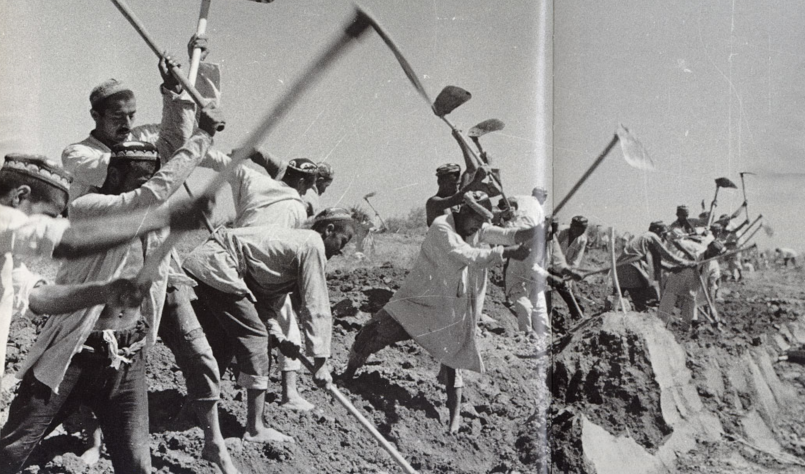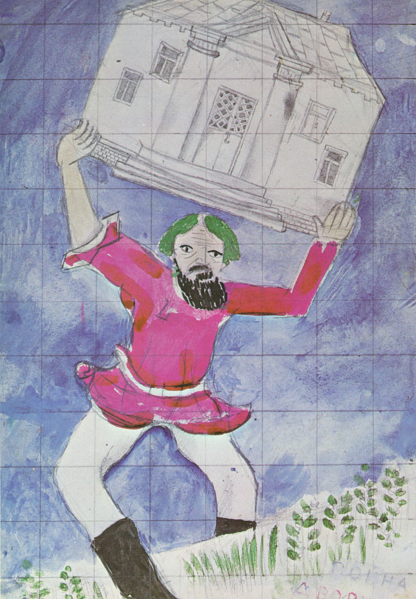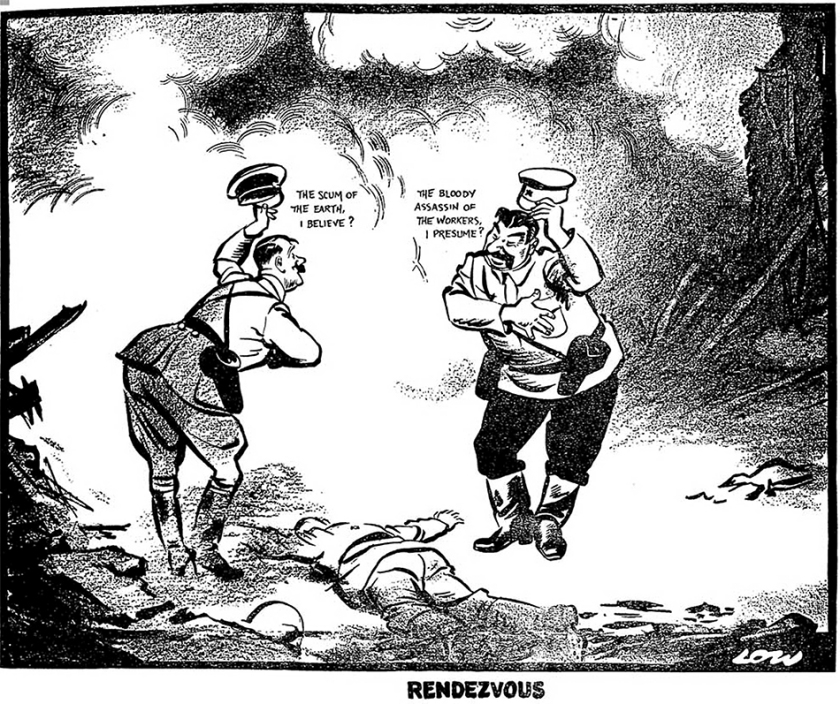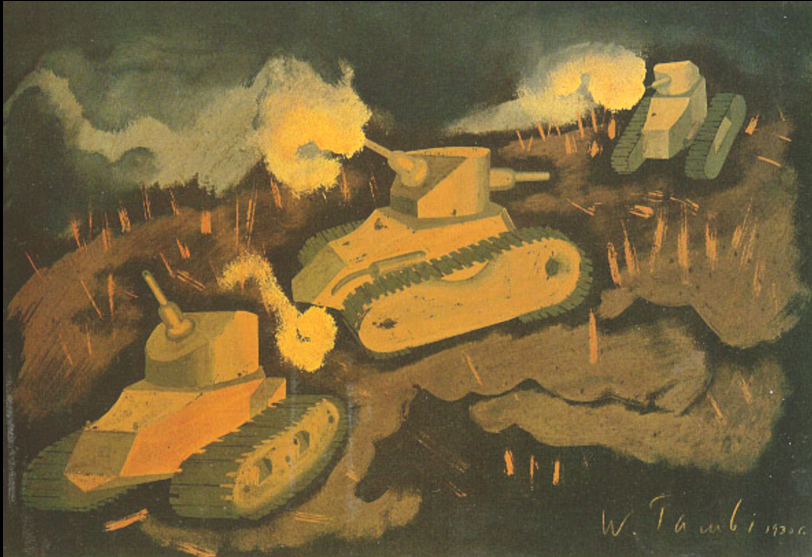By Javier Sethness

“It is in the nature of ideological politics […] that the real content of the ideology […] which originally had brought about the ‘idea’ […] is devoured by the logic with which the ‘idea’ is carried out.”
– Hannah Arendt1
What’s the biggest problem with the “criticisms” of Stalin raised by the “Proles of the Round Table”? That they are so disingenuous and anemic. One of the three critiques raised—about Spain—in fact isn’t critical of Stalin, while we’ve seen (in part I) how the “criticism” on deportations is entirely misleading. A related question might be to ask how it looks for two presumably white U.S. Americans to criticize Stalin for some (1-2%) of his deportations of ethnic Germans, but not to do so when it comes to the dictator’s mass-deportations of Muslims, Buddhists, and other indigenous peoples. At least Mao Zedong judged Stalin as being “30 percent wrong and 70 percent right.”2 For Jeremy and Justin, though, Stalin appears to have been at least 90%, if not 95%, right. Maybe we can soon expect the “Proles of the Round Table” Patreon to begin selling wearables proclaiming that “Stalin did nothing wrong.”
Besides the aforementioned Molotov-Ribbentrop Pact, the May Days, and the mass-deportations of ethnic minorities, let’s now consider five of Stalin’s real crimes.
1. “Socialism in One Country”: Stalinist Ideology
His revision, together with fellow Bolshevik Nikolai Bukharin, of the tradition of socialist internationalism to the reactionary, ultra-nationalist idea of “socialism in one country.” Stalin and Bukharin arrived at this conclusion to compete against Lev Trotsky’s rival concept of “permanent revolution,” which calls first for a European and then global federation of socialist republics. This Stalinist doctrine, which demanded that the interests of the Soviet bureaucracy be considered first within the Third International (or Comintern), can explain both the General Secretary’s demand to crush the anarchists in Spain in 1937 and his effective facilitation of Hitler’s rise to power by means of the disastrous Comintern policy that considered the social-democratic (that is, non-Stalinist) opposition to Hitler to be “social-fascist.” The General Secretary would only reverse course and endorse a “Popular Front” strategy after Hitler had taken power.3 Stalinist ultra-nationalism finds contemporary purchase among neo-fascist, national-Bolshevik movements, whereas—perhaps ironically—the Comintern doctrine on “social fascism” has echoes today among ultra-leftists disdainful of coalition-building with more moderate political forces (e.g., as in the 2016 U.S. presidential election). Moreover, Stalin’s preference for “socialism in one country” can help us understand the Soviet Union’s continued sale of petroleum to Mussolini following this fascist’s military invasion of Abyssinia (Ethiopia) in 1935.4 Within this same vein, and anticipating the affinity of today’s neo-Stalinists for campist “analyses” of international relations, Moscow variously supported the feudalist Guo Min Dang (GMD) in China, the Turkish President Mustafa Kemal Atatürk, the Iranian Shah Mohammed Reza Pahlavi, the Afghan King Amanullah Khan, and Ibn al-Sa’ud (founder of Saudi Arabia) during this time on the grounds that these leaders staunchly opposed the West, despite their great distance from any kind of socialist paradigm.5

2. Stalinist Imperialism
His “Great-Russian” chauvinism, as manifested in his brutally imperialist policies toward ethnic minorities—particularly the deportations of Muslims (as mentioned above in part I)—and other subject-peoples of the former Tsarist empire, whose colonial project Stalin enthusiastically embraced. Though Georgian by origin (his birth name was Ioseb Jughashvili), Stalin (whose Russian nom de guerre means “man of steel”) was “the most ‘Russian’ of the early leaders” who advanced not only “socialism in one country,’ but […] a socialism built on a predominantly Russian foundation.”6 According to Dunayevskaya, Stalin’s “national arrogance” was “as rabid as that of any Tsarist official.”7 In contrast to his mentor and supervisor Vladimir I. Lenin, who at least formally supported the right of self-determination for the oppressed nationalities of the Tsarist empire while greatly violating this principle in practice, Stalin was openly imperialist on the national question: according to the terms of this relationship, the colonies were to be “plundered for raw materials and food to serve the industrialisation of Russia.”8 It therefore remains clear that, under the Soviet Union, “Russia was not a nation state but an empire, an ideological state. Any definition as a nation-state would probably have excluded at least the non-Slavs, and certainly the Muslims.”9 Accordingly, the official history taught in Stalin’s USSR rehabilitated the mythical Tsarist narrative that the Russian “Empire had brought progress and civilisation to backward peoples.”10

In Georgia, a former Tsarist-era colony located in the Caucasus Mountains, the social-democratic Menshevik Party declared independence in 1918 to found the Georgian Democratic Republic, otherwise known as the Georgian Commune, wherein parliamentary democracy and a relatively collaborative relationship among the peasantry, proletariat, and political leadership lasted for three years, until Stalin and his fellow Georgian Bolshevik Sergo Ordzhonikidze organized a Red Army invasion in 1921 which crushed this courageous experiment in democratic socialism. The errant ex-colony of Georgia was thus forcibly reincorporated into the ex-Tsarist Empire—by then, the “Transcaucasian Federated Soviet Republic,” part of the Soviet Union.11 Besides Georgia, this “Transcaucasian Federated Soviet Republic” would include Azerbaijan and Armenia, which had also been occupied by the Red Army in 1920.12
In the Muslim-majority provinces of Central Asia, otherwise known as Turkestan, the poorest region of the former Tsarist Empire, Lenin and Stalin sided with the interests of the Russian settlers against the Muslim peasantry.13 In Orientalist fashion, the Bolsheviks considered Central Asia’s “Muslims as culturally backward, not really suitable to be communists and needing to be kept under a kind of tutelage.”14 Yet in light of the sustained Basmachi revolt waged by Muslim guerrillas against Soviet imperialism in the first decade after October 1917, Stalin also recognized the significant threat these colonized Muslims could pose to the Soviet Union—hence his active discouragement of pan-Islamism and pan-Turkism by means of cutting off the USSR’s Muslims “subjects,” many of them ethnically and linguistically Turkic, from the rest of the Ummah (Islamic global brotherhood or community) abroad. An early 1930’s law punishing unauthorized exit from the USSR made observation of hajj, or the pilgrimage to Mecca, quite impossible.15 The expulsion from the Communist Party (1923) and subsequent imprisonment (1928) of the Volga Tatar Sultan Galiev, a pan-Islamist “national-communist” who envisioned organizing the Turkic Muslims into a fighting force against Western imperialism, followed a similar logic.16



